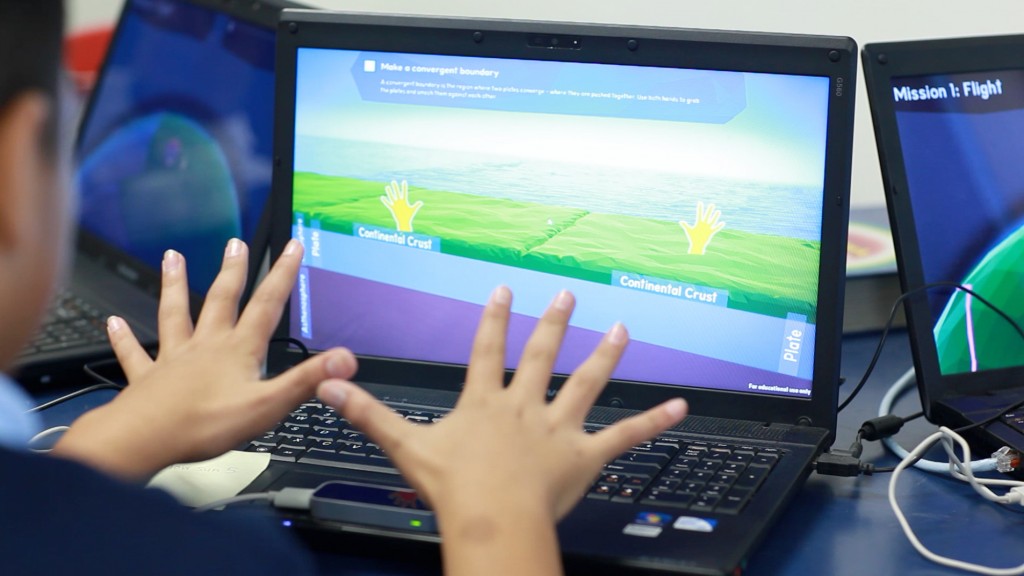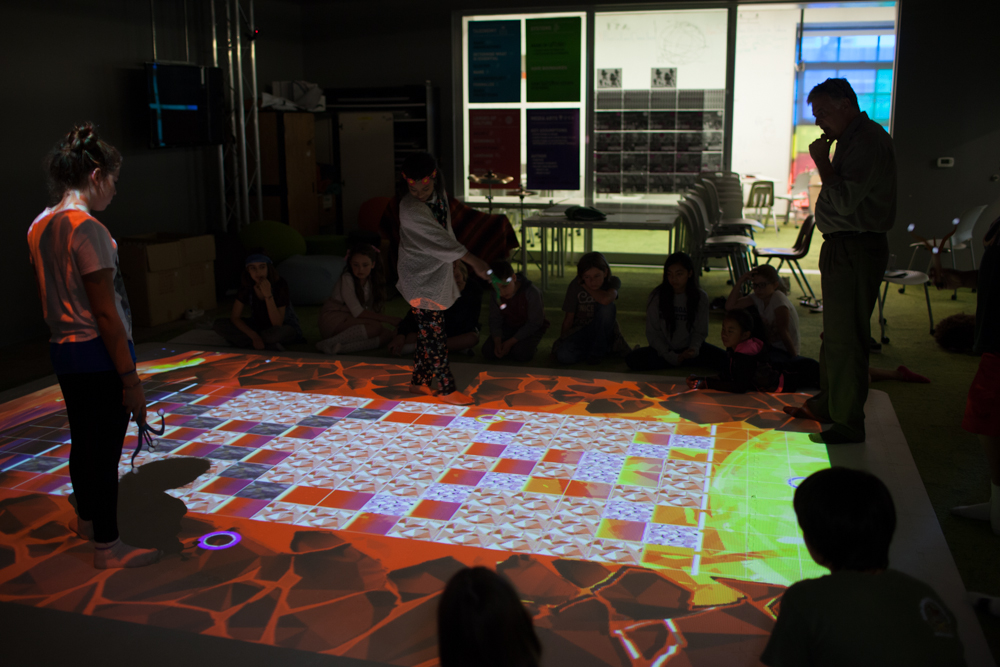
The plate tectonics game moved from physical play outside to a game built to respond to student movement.
The educational nonprofit GameDesk launched two new games today into the crowded learning games field. The games themselves are garnering a lot of attention, but the research and design work that created them is equally worth noting.
Their games, Geomoto: Plate Tectonics and Pangean: Continental Drift, come at the end of a long and thoroughly research-based design process. For GameDesk CEO Lucien Vattel, the games also mark the culmination of his group’s effort to put evidence-centered design into practice.
“This is the project where we really started catching our stride,” Vattel said recently, adding the two games released today are the result of a “project where we really checked off all the boxes. When you do that you get some games that kids want to play with real learning outcomes.”
The project was funded by a mix of sources, including the National Science Foundation and the National Academy of Sciences. Vattel said that the mix of funders ensured that the research approach would be especially solid, yet still aimed at delivering a product that could be sold commercially.
GameDesk documented the process in a video that walked through the design iterations, from kids playing physical games on the school playground to transferring that play to the games that mixed physical motion with the digital game.
GeoMoto – Games and Learning from GameDesk on Vimeo.
Project Manager Max Rich said starting in the real world had key design advantages.
“[I]t allowed us in a very immediate way, without building massive prototypes digitally or physically, to test out different aspects of embodiment with immediate feedback. It also gave us insights into what kinds of experiences technology could enhance or provide that a tech experience couldn’t,” he said, adding it also allowed the team to “get our sea legs with kinesthetic game design. What does it look like/feel like when we are leveraging the body movement to teach.”

The “floor exercise” mixed physical action with the emerging digital game play.
The design process then moved to what they called a “floor exercise” where students physically moved game elements that were projected onto the floor. The game then migrated onto a more digital platform and was incorporated into a series of “leap games” where students used physical movements to manipulate what was happening on screen – sort of like a Wii or Kinect.
“The leap games really allowed us to make sure that environment [was right] because we determined they would be more self-contained. It put us in a position to make sure the way the game displays and organizes content was intuitive,” Rich said. “We could think about how the levels scaffold processes and concepts from one level to the next.”
Central to the group’s work was a focus on so-called kinesthetic movement as part of the educational process. Other research has noted that the more students incorporate the real world physical actions into the game itself the more the students learn from the game. Vattel noted that held true for the GameDesk work as well.
“In the case of the plate tectonics game, every single kinesthetic movement has direct proportionality to the movement of the plates and the resulting phenomenon which is connected to the specific outcomes that the kids are supposed to learn within the geoscience outcomes. And then the question is are those game mechanics engaging?” he said.
The design challenge was a new one for GameDesk Studios and Rich admitted that, “We were in completely new ground. I believe we were excited to just explore different terrains… By the time we reached plate tectonics we were 1 to 1, where our game mechanics were our learning outcomes. In the earlier versions it was a much more generalized experience. Also as we work with different mechanics we simply got better about thinking about how to design for movement.”
The team has laid out the entire design process in a detailed white paper they are also releasing today.
As part of the research paper the designers conducted extensive testing on the effectiveness of the games to teach difficult geoscience concepts to primarily middle school-aged students. With solid pre- and post-testing, the results were impressive.
“The student improvements from pre to post on these tests ranged from an average of 5% all the way up to an average of 25%. Results for the field accretion game showed improvements of almost 25%. When students played the plate tectonics game, they showed improvements of over 11% from pre to post. For the continental drift game, we saw improvements up to almost 25%,” Vattel and co-author Michelle Riconscente wrote in the paper.
The launch of these two games – currently on iOS, but due out soon for Android – also marks a further refining of their design process, according to Vattel. GameDesk is working, he added, on developing a tutorial of sorts that helps designers truly implement “evidence-centered design” into their work. He said he hoped to have a guide for developers in the coming months.
Vattel said the launch of the two new games is actually the first of a series the company will bring to market in the coming months, saying, “We are a research organization that did and are planning to commercialize most of our products. 60-70 percent of our research from the last five years we plan to have out in the market by the end of the year.”
